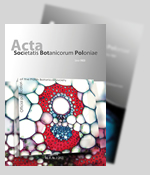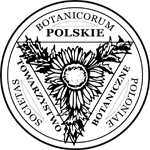Identification of Ephedra species by phylogenetic analyses using matK and ITS1 sequences
Abstract
Keywords
Full Text:
PDFReferences
Hollander JL, Vander Wall SB, Baguley JG. Evolution of seed dispersal in North American Ephedra. Evol Ecol. 2010;24:333–345. http://dx.doi.org/10.1007/s10682-009-9309-1
Flora of China [Internet]. Ephedra przewalskii, Ephedra intermedia. 1999 [cited 2016 Jun 3]. Available from: http://foc.eflora.cn/volume.aspx?num=4
Chinese Pharmacopoeia Committee of People’s Republic of China, editor. The Pharmacopoeia of the People’s Republic of China: I. Beijing: Chemical Industry Press; 2015.
Zheng ZH, Dong ZH, Yu J. In modern study of traditional Chinese medicine. Beijing: University of Traditional Chinese Medicine; 1997.
Asahina H, Shinozaki J, Masuda K, Morimitsu Y, Satake M. Identification of medicinal Dendrobium species by phylogenetic analyses using matK and rbcL sequences. J Nat Med. 2010;64:133–138. http://dx.doi.org/10.1007/s11418-009-0379-8
Hilu KW, Liang HP. The matK gene: sequence variation and application in plant systematics. Am J Bot. 1997;84:830–839. http://dx.doi.org/10.2307/2445819
Kress WJ, Erickson DL. A two-locus global DNA barcode for land plants: the coding rbcL gene complements the non-coding trnH-psbA spacer region. PLoS One. 2007;2:e508. http://dx.doi.org/10.1371/journal.pone.0000508
Wilson CA. Phylogeny of Iris based on chloroplast matK gene and trnK intron sequence data. Mol Phylogenet Evol. 2004;33:402–412. http://dx.doi.org/10.1016/j.ympev.2004.06.013
Newmaster SG, Ragupathy S. Testing plant barcoding in a sister species complex of pantropical Acacia (Mimosoideae, Fabaceae). Mol Ecol Resour. 2009;9:172–180. http://dx.doi.org/10.1111/j.1755-0998.2009.02642.x
Guo Y, Tsuruga A, Yamaguchi S, Oba K, Iwai K, Sekita S, et al. Sequence analysis of chloroplast chlB gene of medicinal Ephedra species and its application to authentication of Ephedra herb. Biol Pharm Bull. 2006;29(6):1207–1211. http://dx.doi.org/10.1248/bpb.29.1207
Lahaye R, Bank M, Bogarin D, Warner J, Pupulin F, Gigot G, et al. DNA barcoding the floras of biodiversity hotspots. Proc Natl Acad Sci USA. 2008;105:2923–2928. http://dx.doi.org/10.1073/pnas.0709936105
Bafeel SO, Arif IA, Bakir MA, Al Homaidan AA, Al Farhan AH, Khan HA. DNA barcoding of arid wild plants using rbcL gene sequences. Genet Mol Res. 2012;11:1934–1941. http://dx.doi.org/10.4238/2012.July.19.12
Hou DY, Song JY, Yao H, Han JP, Pang XH, Shi LC, et al. Molecular identification of Corni Fructus and its adulterants by ITS/ITS2 sequences. Chin J Nat Med. 2013;11(2):121–127. http://dx.doi.org/10.3724/SP.J.1009.2013.00121
Pang XH, Song JY, Xu HB, Yao H. Identification of Chinese Ephedra herb by ITS2 barcode. Zhong Guo Zhong Yao Za Zhi. 2012;37(8):1118–1120.
Huang JL, Giannasi DE, Price RA. Phylogenetic relationships in Ephedra (Ephedraceae) inferred from chloroplast and nuclear DNA sequences. Mol Phylogenet Evol. 2005;35:48–59. http://dx.doi.org/10.1016/j.ympev.2004.12.020
Doyle JJ, Doyle JL. A rapid DNA isolation procedure for small quantities of fresh leaf tissue. Phytochemical Bulletin. 1987;19:11–15.
Thompson JD, Gibson TJ, Plewniak F, Jeanmougin F, Higgins DG. The Clustal X windows interface: flexible strategies for multiple sequence alignment aided by quality analysis tools. Nucleic Acids Res. 1997;24:4876–4882. http://dx.doi.org/10.1093/nar/25.24.4876
Tamura K, Dudley J, Nei M, Kumar S. MEGA4: molecular evolutionary genetics analysis (MEGA) software version 4.0. Mol Biol Evol. 2007;24:1596–1599. http://dx.doi.org/10.1093/molbev/msm092
Huelsenbeck JP, Ronquist F. Mrbayes: Bayesian inference of phylogeny. Bioinformatics. 2001;17:754–755. http://dx.doi.org/10.1093/bioinformatics/17.8.754
Nylander JAA. MrModeltest, version 1.0b [Internet]. 2016 [cited 2016 May 25]. Available from: https://www.abc.se/~nylander/
Swofford DL. PAUP: phylogenetic analysis using parsimony (and other methods), version 4.0b10. Sunderland, MA: Sinauer; 2003.
Wang QB, Wang L, Zhou RC, Zhao XM, Shi SH, Yang Y, et al. Phylogenetic position of Ephedra rhytidosperma, a species endemic to China: evidence from chloroplast and ribosomal DNA sequences. Chin Sci Bull. 2005;50:2901–2904. http://dx.doi.org/10.1007/BF02899657
Long CF, Kakiuchi N, Takahashi A, Komatsu K, Cai SQ, Mikage M. Phylogenetic analysis of the DNA sequence of the non-coding region of nuclear ribosomal DNA and chloroplast of Ephedra plants in China. Planta Med. 2004;70:1080–1084. http://dx.doi.org/10.1055/s-2004-832651
Long C, Kakiuchi N, Zhong G, Mikage M. Survey on resources of Ephedra plants in Xinjiang. Biol Pharm Bull. 2005;28:285–288. http://dx.doi.org/10.1248/bpb.28.285
DOI: https://doi.org/10.5586/asbp.3497
|
|
|







